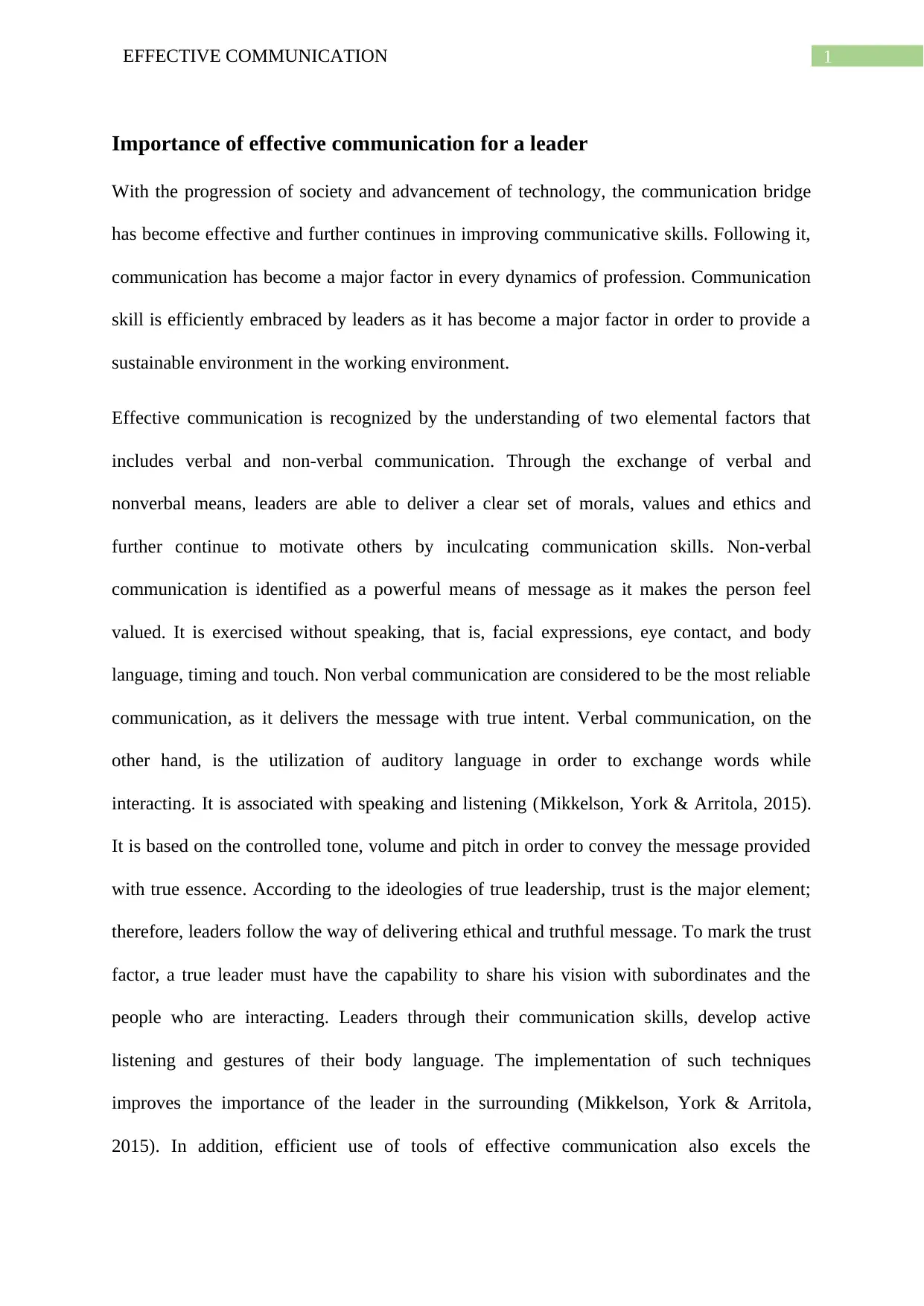Effective Communication and its Significance in Leadership Roles
VerifiedAdded on 2022/08/13
|4
|684
|20
Report
AI Summary
This report explores the critical role of effective communication in leadership, examining both verbal and non-verbal communication techniques. It emphasizes how leaders utilize these skills to convey messages, build trust, and motivate others. The report highlights the significance of non-verbal cues, such as facial expressions and body language, and the importance of adapting communication strategies to specific situations. Furthermore, the report analyzes a case study involving a clinical situation, demonstrating the challenges and strategies in communicating sensitive information. It underscores the need for healthcare professionals to use empathetic and persuasive communication to influence patient behavior and encourage adherence to treatment plans. The report references key academic sources to support its arguments, offering a comprehensive overview of effective communication in leadership and healthcare contexts.
1 out of 4











![[object Object]](/_next/static/media/star-bottom.7253800d.svg)